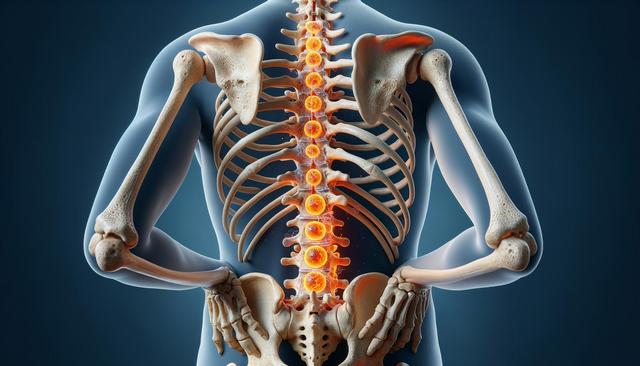What Is Osteoporosis?
Osteoporosis is a skeletal condition characterized by reduced bone density and structural deterioration of bone tissue. This leads to increased fragility and a higher risk of fractures. The disease often develops silently over time, and many individuals are unaware they have it until they experience a fracture. The spine, being one of the most load-bearing structures in the body, is especially vulnerable. Vertebrae can become so weak that they collapse under normal pressure, resulting in spinal compression fractures. These fractures can lead to significant pain, reduced mobility, and a noticeable decrease in height.
Several factors contribute to the development of osteoporosis, including age, hormonal changes (especially in postmenopausal women), lack of calcium and vitamin D, and a sedentary lifestyle. Genetics also plays a role, and individuals with a family history of the condition should be particularly vigilant. Smoking, excessive alcohol consumption, and certain medications can further increase the risk.
How Osteoporosis Affects the Spine
The vertebrae in the spine are composed of spongy bone that becomes porous and brittle with osteoporosis. When bone mass diminishes, the spine can no longer support body weight properly, leading to a range of complications:
- Compression fractures: These occur when weakened vertebrae collapse, often without a major injury.
- Kyphosis: A forward curvature of the spine, often called a dowager’s hump, resulting in poor posture.
- Chronic pain: Due to nerve compression and stress on surrounding muscles and ligaments.
- Reduced lung capacity: Severe spinal deformities can impact the chest cavity and breathing efficiency.
These changes can significantly affect quality of life, leading to reduced independence and increased risk of further health issues. Early detection and treatment are crucial to minimize damage and maintain spinal function.
Diagnosis and Monitoring
Diagnosing osteoporosis early can prevent many of the complications associated with spinal involvement. The most common test is a bone mineral density (BMD) scan, also known as a DEXA scan. This non-invasive test measures bone density in key areas, including the spine and hips. Physicians also evaluate risk factors and may recommend blood tests to check calcium and vitamin D levels.
Once diagnosed, regular monitoring is important to assess how the condition progresses and how well treatments are working. Patients may be advised to undergo periodic scans, especially if they are taking medications intended to improve bone density. Keeping track of posture, height, and any new back pain can also help catch spinal fractures early.
Other diagnostic tools include spinal X-rays, which may reveal vertebral fractures that have gone unnoticed. In cases where fractures are suspected but not visible on X-rays, MRI or CT scans might be used for a more detailed view.
Treatment Options for Spinal Osteoporosis
Treatment for osteoporosis in the spine focuses on slowing bone loss, improving bone strength, and preventing fractures. It often involves a combination of medication, lifestyle changes, and physical therapy. Common treatment approaches include:
- Medications: These may include bisphosphonates, hormone-related therapy, or newer drugs that stimulate bone formation.
- Supplements: Ensuring adequate intake of calcium and vitamin D is essential for bone health.
- Exercise: Weight-bearing and resistance exercises can help maintain or improve bone density and strengthen muscles supporting the spine.
- Fall prevention: Reducing the risk of falls at home and in daily life can significantly lower the chance of fractures.
In some cases, surgical intervention may be necessary. Procedures like vertebroplasty or kyphoplasty can help stabilize fractured vertebrae and reduce pain. These minimally invasive techniques involve injecting bone cement into the collapsed vertebra to restore some of its height and structure.
Preventing Osteoporosis and Protecting Spinal Health
Prevention starts with building strong bones during childhood and adolescence, but it remains critical throughout life. Adults can take several steps to reduce their risk of developing osteoporosis and protect their spine:
- Consume a balanced diet rich in calcium and vitamin D.
- Engage in regular physical activity, including strength training and balance exercises.
- Avoid smoking and limit alcohol intake.
- Maintain a healthy weight.
- Monitor bone health with regular check-ups, especially for individuals over 50 or those with risk factors.
Proper body mechanics also play a role in protecting the spine. Learning how to lift heavy objects correctly, maintaining good posture, and using supportive furniture can all help minimize stress on the vertebrae.
Education and awareness are powerful tools. Understanding how osteoporosis affects the spine can motivate individuals to take preventive steps and seek care early if symptoms arise.




Leave a Reply